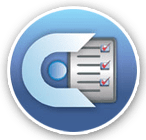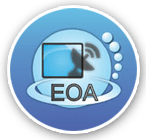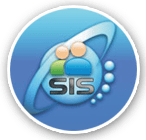As of 2021, an overwhelming 90% of colleges and universities in the United States have integrated LMS platforms into their educational framework. Similarly, around 87% of companies in the corporate sector employ an LMS for training purposes, with a notable preference (67%) for cloud-based platforms.
These platforms offer extensive functionalities designed to enhance the delivery, management, and monitoring of educational content and experiences, highlighting their indispensable value and widespread adoption across various educational landscapes.
Definition
A Learning Management System is a software solution used to plan, execute, and assess a specific learning process. It enables the management of all aspects of the learning process, including content creation, delivery, progress tracking, and reporting.
Functionalities of an LMS include:
• Content Management: Allows instructors to create, store, and manage educational content in various formats (text, video, audio).
• User Management: Administers learner profiles, groups, roles, and permissions.
• Course Enrollment and Management: Facilitates the enrollment of learners into courses and tracks their progress.
• Assessment and Testing: Supports creating and managing tests and quizzes to evaluate learner progress.
• Tracking and Reporting: Monitors learner progress and performance, providing detailed reports to educators and stakeholders.
• Communication and Collaboration: This site offers tools for communication (forums, chats) and collaboration among students and between students and teachers.
Learning Management Systems (LMS) tailored to different educational settings—schools, coaching institutes, universities or colleges—require specialized features to meet their unique needs and objectives. While there is overlap in some functionalities, certain features are more critical to one type of institution than to others. Here's a detailed look at the key features each should prioritize.
LMS for Schools
Schools serve a younger demographic, necessitating an intuitive and engaging LMS for students, teachers, and parents alike. Key features should include:
• User-Friendly Interface: Young learners should find the LMS easy to navigate. A simple, intuitive design encourages consistent use.
• Parental Access: Features that allow parents to track their child's progress, view assignment deadlines, and communicate with teachers.
• Integration with Educational Tools: It is compatible with a wide range of educational tools to support diverse learning styles.
• Gamification: Incorporation of game-like elements (badges, leaderboards) to motivate students and make learning fun.
• Customizable Learning Paths: Ability to tailor learning experiences based on individual student needs and learning paces.
• Safety and Privacy: Strict controls to ensure the protection and privacy of underage students, including secure login processes and data encryption.
• Reporting and Analytics: Detailed reports for teachers and school administrators to track student progress and identify areas for improvement.
LMS for Coaching Institutes
Coaching institutes, often focused on specific exams or skills, require an LMS that supports intensive study and performance tracking. Essential features include:
• Advanced Assessment Tools: Robust tools for creating and administering tests, quizzes, and mock exams, including timed tests, random question banks, and automatic grading.
• Performance Tracking: Detailed analytics for students and instructors to track progress, identify strengths and weaknesses, and tailor study plans accordingly.
• Content Management: Efficient management of vast resources, including lecture videos, study materials, and practice questions, categorized by subject or exam.
• Live Classes and Webinars: Support for live virtual classes and webinars with interactive features like polls, Q&A sessions, and breakout rooms.
• Student Engagement: Communication tools such as forums, chat rooms, and direct messages facilitate interaction among students and between students and instructors.
• Mobile Access: A mobile-friendly platform or dedicated app to allow students to learn on the go, which is crucial for busy or commuting students.
• Scalability: The ability to support a growing number of users and courses without performance degradation ensures that the LMS can grow with the institute.
LMS for Universities or Colleges
• Higher education institutions need an LMS to support various academic disciplines, research activities, and administrative functions. Important features include:
• Comprehensive Course Management: Support for creating and managing a diverse array of courses, including online, hybrid, and in-person formats.
• Academic Integrity Tools: Features that uphold academic integrity include plagiarism detection tools and secure exam proctoring options.
• Collaborative Tools: Integrated tools to facilitate group work and student collaboration, including shared workspaces and document editing.
• Research Support: Capabilities to assist with research activities, such as storing and sharing research materials, collaboration on research projects, and integration with academic databases.
• Accessibility: Compliance with accessibility standards to ensure all students, including those with disabilities, can effectively use the platform.
• Integration with Campus Systems: Seamless integration with other campus systems (e.g., student information systems, library databases) for a unified experience.
• Professional Development: Features supporting the professional development of faculty and staff, including access to training modules, workshops, and certification programs.
Security, data privacy, and compliance with educational standards and regulations are paramount for all types of institutions. The best LMS for any academic setting is one that not only meets the current needs of its users but is also scalable, flexible, and future-proof to adapt to evolving educational technologies and methodologies.
Adoption and Impact
• Adoption in Sectors: By 2021, over 90% of colleges and universities in the U.S. had adopted some form of LMS. In the corporate world, approximately 87% of companies use an LMS for training, with 67% showing a preference for cloud-based platforms.
• User Engagement and Retention: Research shows LMS-delivered courses boast an 85% completion rate, surpassing other online course formats. Incorporating gamification has also increased user engagement by up to 60%.
• Learning Outcomes: Using an LMS can enhance learning outcomes by 25-60%, influenced by interactivity and personalized learning analytics.
Trends and Future Directions
• AI and Machine Learning: AI and ML are increasingly integrated into LMSs to provide personalized learning paths, intelligent tutoring systems, and predictive analytics for learner performance.
• Mobile Learning: With the widespread use of mobile devices smartphones and tablets, LMS providers focus on mobile-friendly designs and functionalities to support learning on the go.
• Microlearning: The trend towards bite-sized learning content shapes LMS development, with platforms offering more support for microlearning experiences.
• Social Learning: Incorporating social media elements into LMS platforms to foster collaborative learning and peer interactions is becoming more common.
• Learning Analytics: Advanced analytics and reporting tools are being developed to provide deeper insights into learning processes, helping educators and organizations optimize training programs.
In conclusion, Learning Management Systems are pivotal in facilitating modern learning environments. With technological advancements and evolving pedagogical approaches, LMSs continue to adapt and innovate, offering more personalized, efficient, and compelling learning experiences.







